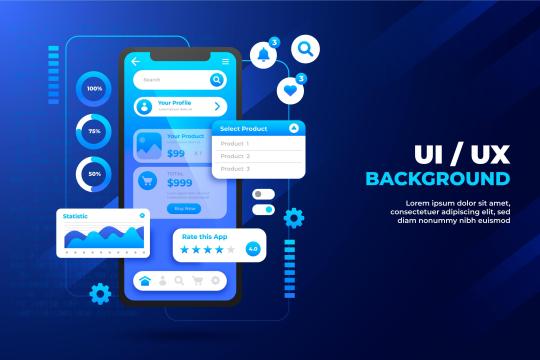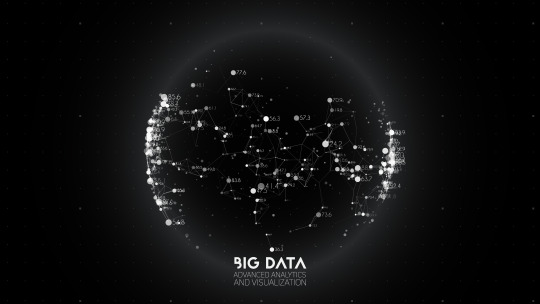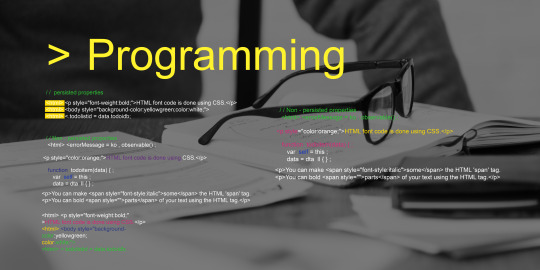Don't wanna be here? Send us removal request.
Text
Navigating Pune's Beauty Scene: How to Find the Best Skin Clinic for Pigmentation Issues

Navigating Pune's Beauty Scene: How to Find the Best Skin Clinic for Pigmentation Issues" is a detailed guide designed to assist individuals in selecting the most suitable skin clinic for addressing pigmentation concerns in Pune, India. Pigmentation issues, such as melasma, sunspots, and hyperpigmentation, can be challenging to treat, requiring specialized care and expertise.
This guide provides valuable insights into the factors to consider when choosing a skin clinic for pigmentation treatments, including the clinic's reputation, the qualifications of the dermatologists, the range of treatments offered, and the quality of customer service. It also offers tips on how to research and evaluate clinics effectively, such as reading reviews, checking credentials, and scheduling consultations.
Additionally, the guide features a curated list of top skin clinics in Pune known for their excellence in treating pigmentation issues. Each clinic is highlighted for its expertise, track record, and patient satisfaction, providing readers with a comprehensive overview of their options.
By following the advice and recommendations outlined in this guide, individuals can make informed decisions and choose the best skin clinic for addressing their pigmentation concerns in Pune.
Best Skin Clinic for Pigmentation Issues
0 notes
Text
Working with RecyclerView and ListView in Android

Working with RecyclerView and ListView in Android involves displaying lists of data efficiently in your app's user interface. Both RecyclerView and ListView are UI components used for this purpose, but RecyclerView is the preferred choice due to its improved performance and flexibility.
RecyclerView and ListView both use adapters to populate data into their respective list items. However, RecyclerView introduces the concept of ViewHolders, which helps in efficiently recycling and reusing list item views as the user scrolls through the list. This results in smoother scrolling performance, especially for large datasets.
To work with RecyclerView in Android, you typically need to create a RecyclerView instance in your layout XML file and then define a layout for the individual list items. You also need to create a custom adapter that extends RecyclerView.Adapter and implements methods to bind data to the list items.
Additionally, RecyclerView supports different layout managers such as LinearLayoutManager, GridLayoutManager, and StaggeredGridLayoutManager, allowing you to customize the layout and appearance of your list.
In contrast, ListView is an older UI component that is less efficient than RecyclerView, especially for large datasets. It lacks the flexibility and performance optimizations provided by RecyclerView, which is why RecyclerView is generally preferred for new Android app development projects.
Android App Development Training in Bangalore.
0 notes
Text
Building Predictive Models with Python: Hands-on Tutorial

Building predictive models with Python empowers data scientists to extract valuable insights from data and make informed decisions. In this hands-on tutorial, we'll delve into the fundamental steps of constructing predictive models.
We start by importing essential libraries such as NumPy, Pandas, and Scikit-Learn, creating a robust foundation. Exploratory Data Analysis (EDA) follows, where we visualize and understand the dataset's characteristics.
Preprocessing steps involve handling missing data, encoding categorical variables, and scaling features for optimal model performance. The tutorial guides you through splitting the dataset into training and testing sets to evaluate model generalization.
We explore various algorithms, from simple linear regression to complex ensemble methods like Random Forests. Understanding model evaluation metrics such as accuracy, precision, and recall ensures a comprehensive assessment of predictive performance.
The tutorial also addresses hyperparameter tuning to optimize model parameters and enhance predictive accuracy. Visualization techniques, like ROC curves, aid in assessing model robustness.
Throughout the tutorial, practical examples and code snippets illustrate each concept, enabling hands-on learning. By the end, participants will have a solid foundation in building predictive models using Python, a valuable skill applicable across industries for solving real-world problems.
Data science training in bangalore
0 notes
Text
Data Cleaning and Preprocessing Techniques in Python

Data cleaning and preprocessing are crucial steps in preparing datasets for analysis or machine learning models. In Python, various techniques streamline the process to ensure accurate and reliable results.
One fundamental step is handling missing data using methods like imputation, where missing values are replaced with appropriate estimates, or deletion, where incomplete observations are removed. Pandas, a popular data manipulation library, provides functions like dropna() and fillna() for these tasks.
Dealing with outliers is another essential aspect. Techniques such as Winsorizing or transforming skewed data using logarithms can help manage extreme values, ensuring they don't unduly influence the analysis.
Normalization and standardization are common preprocessing techniques to scale numerical features, bringing them to a consistent range. Scikit-learn's MinMaxScaler and StandardScaler functions simplify this process.
Categorical variables often require encoding for machine learning models. One-hot encoding or label encoding can be applied using libraries like Scikit-learn or Pandas, ensuring these variables are suitable for algorithmic input.
Handling duplicate data is critical to maintaining the integrity of analyses. Identifying and removing duplicate records can be achieved through Pandas' duplicated() and drop_duplicates() functions.
In summary, mastering data cleaning and preprocessing in Python involves leveraging libraries like Pandas and Scikit-learn for tasks such as handling missing data, managing outliers, scaling features, encoding categorical variables, and removing duplicates. These techniques collectively contribute to a cleaner and more reliable dataset, laying the foundation for robust analyses and machine learning models.
Data science training in pune
0 notes
Text
Social Media Analytics: Understanding Your Data

Social Media Analytics is a pivotal aspect of any digital marketing strategy, providing invaluable insights into the performance and impact of your social media efforts. In the realm of digital marketing, understanding your data is key to making informed decisions and optimizing future campaigns.
These analytics encompass a range of metrics, including engagement rates, reach, impressions, and follower growth. By delving into these statistics, marketers can discern which content resonates most with their audience, allowing for strategic content planning and optimization. Monitoring the effectiveness of different platforms helps allocate resources efficiently, ensuring maximum impact.
Moreover, social media analytics unveil demographic information about your audience, aiding in the creation of targeted content. Understanding peak activity times enables timely posting, maximizing visibility. Conversion tracking and click-through rates provide insights into the effectiveness of call-to-action strategies.
In essence, social media analytics transforms raw data into actionable intelligence. It empowers marketers to measure the success of their campaigns, identify areas for improvement, and adapt strategies for optimal results. As the digital landscape evolves, a proficiency in social media analytics becomes increasingly indispensable for businesses aiming to thrive in the competitive online space.
Digital-Marketing-Training-in-Bangalore
2 notes
·
View notes
Text
The Complete Guide to Google Analytics by Jeff Sauer

The Complete Guide to Google Analytics" by Jeff Sauer is a comprehensive resource that demystifies the intricacies of Google Analytics, providing readers with a thorough understanding of this powerful web analytics platform. Sauer, a recognized expert in the field, delivers a well-organized guide suitable for beginners and experienced users alike.
The book covers fundamental concepts such as setting up Google Analytics accounts, installing tracking codes, and navigating the user interface. It goes beyond the basics, delving into advanced topics like custom reporting, goal tracking, and e-commerce analytics. Sauer's approach is both practical and strategic, emphasizing the importance of aligning analytics with business objectives.
Readers can expect clear explanations of key metrics, insightful tips on interpreting data, and practical advice for optimizing website performance. Sauer also addresses the evolving landscape of digital marketing, discussing how Google Analytics integrates with other tools and platforms.
Whether you're a marketer, business owner, or analyst, this guide serves as an invaluable companion for harnessing the full potential of Google Analytics. With its accessible language, real-world examples, and actionable insights, Sauer's guide empowers readers to make informed decisions and drive success through data-driven strategies.
Digital marketing training in bangalore
5 notes
·
View notes
Text
Serverless Data Analytics with AWS Glue and Athena

Amazon Kinesis is a fully managed, real-time data streaming service provided by AWS, designed to ingest, process, and analyze large volumes of data in real time. Kinesis offers three main services: Kinesis Data Streams, Kinesis Data Firehose, and Kinesis Data Analytics.
Kinesis Data Streams enables the real-time ingestion of streaming data, allowing applications to consume and process data concurrently. Producers can send data records to a stream, and consumers can retrieve and process these records in near real-time.
Kinesis Data Firehose simplifies the process of loading streaming data into AWS services like Amazon S3, Amazon Redshift, or Amazon Elasticsearch. It automatically scales to handle varying data volumes and simplifies data delivery without requiring manual intervention.
Kinesis Data Analytics facilitates real-time analytics on streaming data by allowing users to run SQL queries on the incoming data stream. This service supports continuous queries, enabling dynamic analysis and immediate insights into changing data patterns.
Together, these Kinesis services provide a scalable and efficient solution for organizations looking to harness the power of real-time data streaming, enabling them to make timely and informed decisions based on up-to-the-moment information.Top of Form
AWS training in Pune
0 notes
Text
Machine Learning on Microservices Architecture with AWS-Building Scalable Applications

Leveraging machine learning within a microservices architecture on AWS allows for the creation of scalable and efficient applications. AWS offers a comprehensive suite of services to seamlessly integrate machine learning capabilities into microservices-based applications. By breaking down the application into independently deployable microservices, each responsible for a specific business function, developers can enhance flexibility, maintainability, and scalability.
Amazon SageMaker, an AWS machine learning service, facilitates the training and deployment of machine learning models at scale. This allows microservices to incorporate predictive analytics, recommendation systems, or other intelligent features. The serverless computing paradigm, exemplified by AWS Lambda, complements microservices by enabling event-driven, cost-effective, and scalable execution of code.
Containerization services like Amazon ECS or Kubernetes on AWS further enhance the deployment and management of microservices, providing consistency across development, testing, and production environments. AWS Step Functions can orchestrate complex workflows, connecting microservices and machine learning components seamlessly.
Overall, combining microservices architecture with AWS's machine learning and cloud computing capabilities empowers developers to build scalable applications that efficiently harness the benefits of artificial intelligence while maintaining the agility and responsiveness inherent in microservices-based systems.
AWS training in Pune
0 notes
Text
Advantages of learning Full Stack Development Master program

Learning a Full Stack Development Master's program offers several compelling advantages:
Versatility: Full stack developers possess skills in both frontend and backend technologies, allowing them to work on all aspects of web development. This versatility makes them valuable assets in the tech industry.
End-to-End Understanding: Mastering full stack development means understanding the entire web development process, from designing user interfaces to managing databases and servers. This comprehensive knowledge allows for more efficient problem-solving and development.
Problem-Solving Skills: Full stack developers often troubleshoot issues across the entire application stack, honing their problem-solving abilities and critical thinking skills.
Job Opportunities: The demand for full stack developers is high. Companies seek professionals who can handle multiple aspects of development, leading to abundant job opportunities across diverse industries.
Flexibility in Projects: Full stack developers can work on different types of projects, from small-scale websites for startups to complex systems for larger corporations. This flexibility allows for a varied and engaging career.
Entrepreneurial Advantage: For entrepreneurs or individuals aiming to build their products or startups, a mastery of full stack development enables them to manage various aspects of their projects without relying on multiple specialists.
Understanding the Full Picture: Full stack developers have a holistic view of applications, enabling them to create more efficient and cohesive solutions by understanding how each component interacts.
Adaptability to Technologies: Technology evolves rapidly, and full stack developers, equipped with a diverse skill set, can adapt to new frameworks, languages, and tools more easily.
Collaboration & Communication: Full stack developers often bridge the gap between different teams (like designers and backend developers) due to their understanding of both worlds, fostering better collaboration.
Continuous Learning: Full stack development involves various technologies, requiring continuous learning to stay updated with the latest advancements, ensuring relevance in the ever-evolving tech landscape.
0 notes
Text
Why to learn AWS Cloud Computing

Learning AWS (Amazon Web Services) cloud computing offers several compelling reasons:
Industry Dominance: AWS is one of the leading cloud service providers, holding a significant market share. Learning AWS provides skills and knowledge that are highly sought after in the industry.
Versatility: AWS offers a wide range of cloud services and solutions, catering to diverse needs like computing power, storage, databases, machine learning, IoT, and more. Learning AWS allows you to work with various services within a unified platform.
Scalability: AWS enables businesses to scale their resources according to demand, allowing for flexibility and cost-efficiency. Understanding AWS architecture helps in designing scalable and robust solutions.
Global Reach: AWS has a global infrastructure with data centers in various regions. Learning AWS allows you to design and deploy applications globally, ensuring low latency and high availability.
Job Opportunities: AWS certifications are highly valued in the job market. Having AWS skills can open doors to roles like cloud architect, cloud engineer, solutions architect, and more, in a wide array of industries.
Innovation and Experimentation: AWS provides a platform for innovation by offering a wide array of tools and services that facilitate experimentation without significant initial investment.
Cost Efficiency: AWS offers a pay-as-you-go pricing model, enabling businesses to pay only for the resources they use. Knowledge of AWS helps in optimizing costs and resource usage.
Security: AWS provides robust security measures and compliance certifications. Learning AWS includes understanding these security features, helping ensure data protection and compliance with industry standards.
Continuous Evolution: AWS regularly introduces new services and updates existing ones to keep up with technological advancements. Learning AWS involves staying updated with the latest developments.
Community and Support: AWS has a vast community of developers, resources, and documentation available. Learning AWS means being part of a vibrant community with access to support and learning materials.
0 notes
Text
Database Management

Database management is a critical aspect of software development, and it involves designing, implementing, and maintaining databases to efficiently store and retrieve data. Here's a guide to database management:
1. Understand the Basics:
Relational Database Concepts:
Understand fundamental concepts such as tables, rows, columns, primary keys, foreign keys, normalization, and denormalization.
2. Database Design:
Entity-Relationship Diagram (ERD):
Create ER diagrams to visualize the relationships between different entities in the database.
Normalization:
Normalize the database to eliminate data redundancy and improve data integrity.
Denormalization:
Consider denormalization for optimizing query performance in certain scenarios.
3. Popular Database Management Systems (DBMS):
SQL-based (Relational) Databases:
MySQL, PostgreSQL, Oracle, Microsoft SQL Server.
NoSQL Databases:
MongoDB (document-oriented), Redis (key-value store), Cassandra (wide-column store), Neo4j (graph database).
4. Database Modeling:
Use a Modeling Tool:
Tools like MySQL Workbench, ERStudio, or draw.io can assist in visually designing your database schema.
5. SQL (Structured Query Language):
Basic SQL Commands:
Learn essential SQL commands for data manipulation (SELECT, INSERT, UPDATE, DELETE), data definition (CREATE, ALTER, DROP), and data control (GRANT, REVOKE).
Stored Procedures and Triggers:
Understand and use stored procedures and triggers for more complex and reusable database logic.
6. Database Administration:
User Management:
Create and manage user accounts with appropriate permissions.
Backup and Recovery:
Implement regular backup and recovery procedures to safeguard data.
Performance Tuning:
Optimize database performance through indexing, query optimization, and caching.
7. Database Security:
Authentication and Authorization:
Implement robust authentication and authorization mechanisms to control access to the database.
Encryption:
Use encryption for sensitive data both in transit and at rest.
8. ORM (Object-Relational Mapping):
Frameworks like SQLAlchemy (Python), Hibernate (Java), or Entity Framework (C#):
Learn how to use ORMs to map database entities to objects in your programming language.
9. Database Version Control:
Version Control for Database Schema:
Use tools like Flyway or Liquibase to version control your database schema.
10. Database Deployment:
Database Migrations:
Understand and implement database migration strategies for evolving your database schema over time.
DevOps Integration:
Integrate database changes into your CI/CD pipeline for seamless deployment.
11. Monitoring and Logging:
Database Monitoring Tools:
Use tools like Prometheus, Grafana, or native database monitoring features to track performance and detect issues.
Logging:
Implement logging to capture and analyze database-related events and errors.
12. Documentation:
Document Your Database:
Maintain clear and up-to-date documentation for your database schema, relationships, and data dictionaries.
13. Data Migration:
Tools like AWS Database Migration Service or Django Migrations:
Learn how to migrate data between databases or versions seamlessly.
14. NoSQL Database Considerations:
Understanding NoSQL Databases:
If using a NoSQL database, understand the specific characteristics and use cases for your chosen type (document store, key-value store, graph database).
15. Database Trends:
Explore New Technologies:
Stay updated on emerging database technologies, such as NewSQL databases, blockchain databases, and cloud-native databases.
Full Stack Development Training in pune
0 notes
Text
The Future of Web Design

The future of web design is an exciting and ever-evolving landscape, shaped by technological advancements, changing user behaviors, and emerging design trends. Here are several key areas that are likely to influence the future of web design:
Mobile-First and Responsive Design: With the increasing use of smartphones and other mobile devices, designing for mobile-first and ensuring responsive web design will continue to be a standard practice. Websites must adapt seamlessly to various screen sizes and resolutions.
AI and Machine Learning: Artificial Intelligence and machine learning algorithms are being integrated into web design processes. AI can analyze user behaviors, personalize user experiences, and automate repetitive design tasks, making websites smarter and more user-focused.
Voice User Interfaces (VUI) and Conversational Design: As voice assistants and smart speakers become more prevalent, designing for voice interactions will be crucial. Conversational interfaces, chatbots, and voice commands will play a significant role in how users interact with websites.
AR (Augmented Reality) and VR (Virtual Reality): AR and VR technologies are likely to become more integrated into web design, offering immersive and interactive experiences. This could revolutionize industries such as e-commerce, education, and entertainment.
Microinteractions and Animation: Microinteractions, subtle animations, and transitions enhance user engagement and provide feedback. These elements will be used strategically to guide users, provide context, and create delightful experiences.
Data-Driven Design: Design decisions will increasingly be based on data analysis and user feedback. A/B testing, user surveys, and analytics will guide designers in optimizing user experiences and improving conversion rates.
Sustainability and Green Web Design: As environmental concerns grow, there will be a focus on sustainable web design practices. This includes optimizing website performance to reduce energy consumption, using eco-friendly hosting services, and promoting digital accessibility for all, including people with disabilities.
Blockchain Integration: Blockchain technology can enhance security, privacy, and transparency in web transactions. It may find applications in areas like online payments, digital identities, and content ownership.
Minimalism and Brutalism: Minimalistic design principles and brutalist aesthetics (a raw, unpolished design style) are gaining popularity. These styles emphasize simplicity, clarity, and authenticity, often avoiding excessive embellishments.
Emotional Design and User Empathy: Designers will focus on creating emotionally resonant experiences. Understanding users' emotions and crafting designs that evoke specific feelings will be essential for building strong user connections.
Web 3.0 and Decentralization: The concept of Web 3.0 involves decentralized technologies like blockchain and aims to give users more control over their data and online interactions. Decentralized applications (DApps) and blockchain-based websites might become more prevalent.
Web design training in pune
0 notes
Text
10 Essential Web Design Principles Every Designer Should Know

Certainly! Here are 10 essential web design principles that every designer should know to create effective and visually appealing websites:
Clarity and Simplicity: Keep the design clean, simple, and easy to understand. Use clear and concise language, avoid unnecessary elements, and focus on the essential information.
Consistency: Maintain consistent design elements such as colors, fonts, and navigation throughout the website. Consistency enhances usability and creates a cohesive user experience.
Mobile-Friendly Design: Design the website to be responsive, ensuring it looks and functions well on various devices and screen sizes, including smartphones and tablets.
Hierarchy: Use visual hierarchy to prioritize content and guide users' attention. Important elements should stand out and be easily noticeable, guiding users through the content flow.
Whitespace: Utilize whitespace (or negative space) effectively to improve readability and create a balanced layout. Whitespace helps in reducing visual clutter and allows important elements to breathe.
Readability and Typography: Choose readable fonts and maintain a proper font size and line height. Ensure good contrast between text and background to enhance readability, especially for users with visual impairments.
Visual Appeal: Use high-quality images, graphics, and multimedia elements to enhance the visual appeal of the website. Visually appealing content can engage users and make the website more memorable.
Navigation: Design intuitive and user-friendly navigation menus. Ensure that users can easily find what they are looking for and navigate between different sections of the website without confusion.
Loading Speed Optimization: Optimize images and other media files to reduce loading times. A fast-loading website enhances user experience and contributes to higher search engine rankings.
Accessibility: Design the website to be accessible to all users, including those with disabilities. Follow accessibility standards (such as WCAG guidelines) to ensure that people with disabilities can access and interact with the content effectively.
Web design training in pune
0 notes
Text
UX vs UI Design

UX (User Experience) design and UI (User Interface) design are two distinct but closely related fields in the realm of digital product development. They both play crucial roles in creating successful and user-friendly products, but they focus on different aspects of the user interaction with the product.
UI Design (User Interface Design):
UI design is primarily concerned with the visual aspects of a product or a system. It deals with the look and feel of the interface, including elements such as colors, typography, buttons, icons, and other graphical elements. UI designers work on creating visually appealing and aesthetically pleasing interfaces that users interact with. They are responsible for designing each screen or page with which a user interacts and ensuring that the interface visually communicates the path that a UX designer has laid out.
UI designers need to consider:
Layout: How the interface is structured and organized.
Visual Design: The aesthetics, including colors, typography, and imagery.
Interactivity: How users interact with the interface elements like buttons, forms, and animations.
Responsiveness: Designing for different screen sizes and devices.
UX Design (User Experience Design):
UX design, on the other hand, is a broader and more analytical field. It encompasses all aspects of the end user's interaction with a company, its services, and its products. UX designers are concerned with understanding the user's journey, their needs, behaviors, and emotions when interacting with a product. They focus on ensuring that the product is easy to use, intuitive, and provides a seamless experience to the users.
UX designers need to consider:
User Research: Understanding the users' needs, motivations, and behaviors.
Information Architecture: Organizing and structuring information to help users navigate the product efficiently.
Wireframing and Prototyping: Creating low-fidelity representations of the product to test functionality and gather feedback.
Usability Testing: Testing the product with real users to identify any usability issues and areas of improvement.
Accessibility: Ensuring that the product is accessible to all users, including those with disabilities.
Web design training in pune
0 notes
Text
Big Data in Healthcare: Transforming Patient Care

Big data analytics is transforming various industries, and healthcare is no exception. The integration of big data in healthcare has the potential to significantly improve patient care, enhance outcomes, and optimize costs. Here’s how big data is revolutionizing healthcare:
Early Disease Detection and Prevention:
Big data analytics enables healthcare providers to analyze large datasets to identify patterns and trends. By analyzing symptoms, lifestyle choices, and genetic information, healthcare professionals can predict diseases such as diabetes, heart diseases, and certain types of cancer. Early detection allows for timely interventions and preventive measures.
Personalized Medicine:
Big data allows for the analysis of vast amounts of patient data, including genetic information, lifestyle factors, and environmental influences. This analysis helps in tailoring medical treatments to individual patients, ensuring that they receive the most effective and personalized care possible. Personalized medicine reduces the risk of adverse reactions to medications and increases the overall efficacy of treatments.
Predictive Analytics for Hospital Management:
Hospitals and healthcare facilities can use big data analytics to predict patient admissions, optimize resource allocation, and streamline inventory management. By analyzing historical data, hospitals can forecast patient influx, enabling them to allocate staff and resources efficiently. This leads to reduced wait times, better utilization of resources, and improved patient satisfaction.
Enhancing Patient Engagement:
Big data tools enable healthcare providers to gather and analyze patient feedback, social media interactions, and other forms of communication. By understanding patient sentiments and preferences, healthcare organizations can tailor their services to meet patient expectations. Engaged patients are more likely to adhere to treatment plans and follow medical advice, leading to better health outcomes.
Drug Discovery and Development:
Pharmaceutical companies are using big data analytics to expedite drug discovery and development processes. Analyzing vast datasets related to molecular structures, genetic information, and clinical trial results helps researchers identify potential drug candidates more quickly. This accelerates the development of new medications and therapies, bringing innovative treatments to patients faster.
Real-time Health Monitoring:
Big data analytics, coupled with the Internet of Things (IoT) devices, allows for real-time health monitoring. Wearable devices and sensors can collect continuous data on patients' vital signs and overall health. This data can be analyzed in real-time, enabling healthcare providers to detect any anomalies and respond promptly. Continuous monitoring is particularly beneficial for patients with chronic conditions and the elderly, improving their quality of life and reducing hospital readmissions.
Cost Optimization:
By analyzing cost and operational data, healthcare providers can identify inefficiencies and areas for cost optimization. This helps in reducing healthcare expenses, making healthcare more affordable and accessible to a larger population. Data-driven insights enable healthcare organizations to negotiate better contracts with suppliers, minimize wastage, and streamline administrative processes.
0 notes
Text
The Future of Cloud Computing

The future of cloud computing is expected to be marked by several key trends and developments, driven by advancements in technology and changing business needs. Here are some of the significant aspects that will shape the future of cloud computing:
Edge Computing: Edge computing is gaining prominence. It involves processing data closer to the source of data generation, reducing latency and bandwidth consumption. This approach is essential for real-time applications, IoT devices, and scenarios where rapid data analysis is critical.
Serverless Computing: Serverless computing, which allows developers to run code without managing servers, is expected to become more mainstream. It offers greater flexibility, cost savings, and simplification of application development.
Hybrid and Multi-Cloud Strategies: Many organizations are adopting hybrid and multi-cloud approaches to balance flexibility, compliance, and risk management. These strategies enable applications to run across multiple cloud providers or a combination of cloud and on-premises infrastructure.
AI and Machine Learning Integration: Cloud providers are integrating artificial intelligence and machine learning into their services. This allows businesses to build intelligent applications, automate processes, and gain insights from vast amounts of data.
Quantum Computing: While still in its early stages, quantum computing holds the potential to revolutionize cloud computing by significantly accelerating complex data processing and cryptography.
Blockchain and Cloud: The integration of blockchain technology with cloud services is becoming more common, enabling enhanced security, transparency, and trust in data transactions.
Containerization and Kubernetes: Containers and Kubernetes are increasingly used for deploying and managing applications. They offer a portable and scalable way to build and run cloud-native applications.
5G and Cloud: The rollout of 5G networks is expected to fuel cloud computing innovations, especially for IoT and mobile applications. It will provide low latency and high-speed connectivity.
Green and Sustainable Cloud: There is a growing focus on making cloud computing more environmentally sustainable. Cloud providers are investing in renewable energy sources and implementing energy-efficient data center technologies.
Security and Compliance: As data breaches and security threats continue to evolve, there will be a greater emphasis on enhancing cloud security and compliance features, including zero-trust models and identity and access management.
Quantifiable ROI: Companies are looking for more concrete return on investment (ROI) from cloud investments. This will drive cloud providers to offer more value-added services and clearer cost-saving benefits.
Automation and Orchestration: Automation of cloud management tasks and orchestration of workflows will continue to increase, reducing manual overhead and improving efficiency.
Industry-Specific Cloud Solutions: Cloud providers are developing industry-specific solutions to address the unique needs of sectors like healthcare, finance, and manufacturing.
Data Privacy and Sovereignty: Concerns about data privacy and sovereignty are influencing cloud adoption. Regulatory changes and data protection laws will continue to shape how data is stored and processed.
Education and Skill Development: As cloud technology evolves, there will be an increased demand for professionals with cloud expertise. Education and skill development in cloud-related fields will play a crucial role.
1 note
·
View note
Text
Software, Web Development & Digital Marketing Company - DigiSnare
DigiSnare Technologies offers the Services & Internship in Digital Marketing, Web Design, SEO, Application and Web Development.
1 note
·
View note